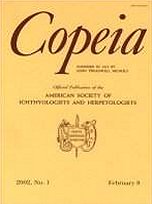
Myxine jespersenae, a New Species of Hagfish (Myxiniformes: Myxinidae) from the North Atlantic Ocean
Bryconamericus turiuba, a New Species from the Upper Rio Paraná System (Ostariophysi: Characiformes)
Egg Component Comparisons within and among Clutches of the Diamondback Terrapin, Malaclemys terrapin
No abstract available
No abstract available
No abstract available
